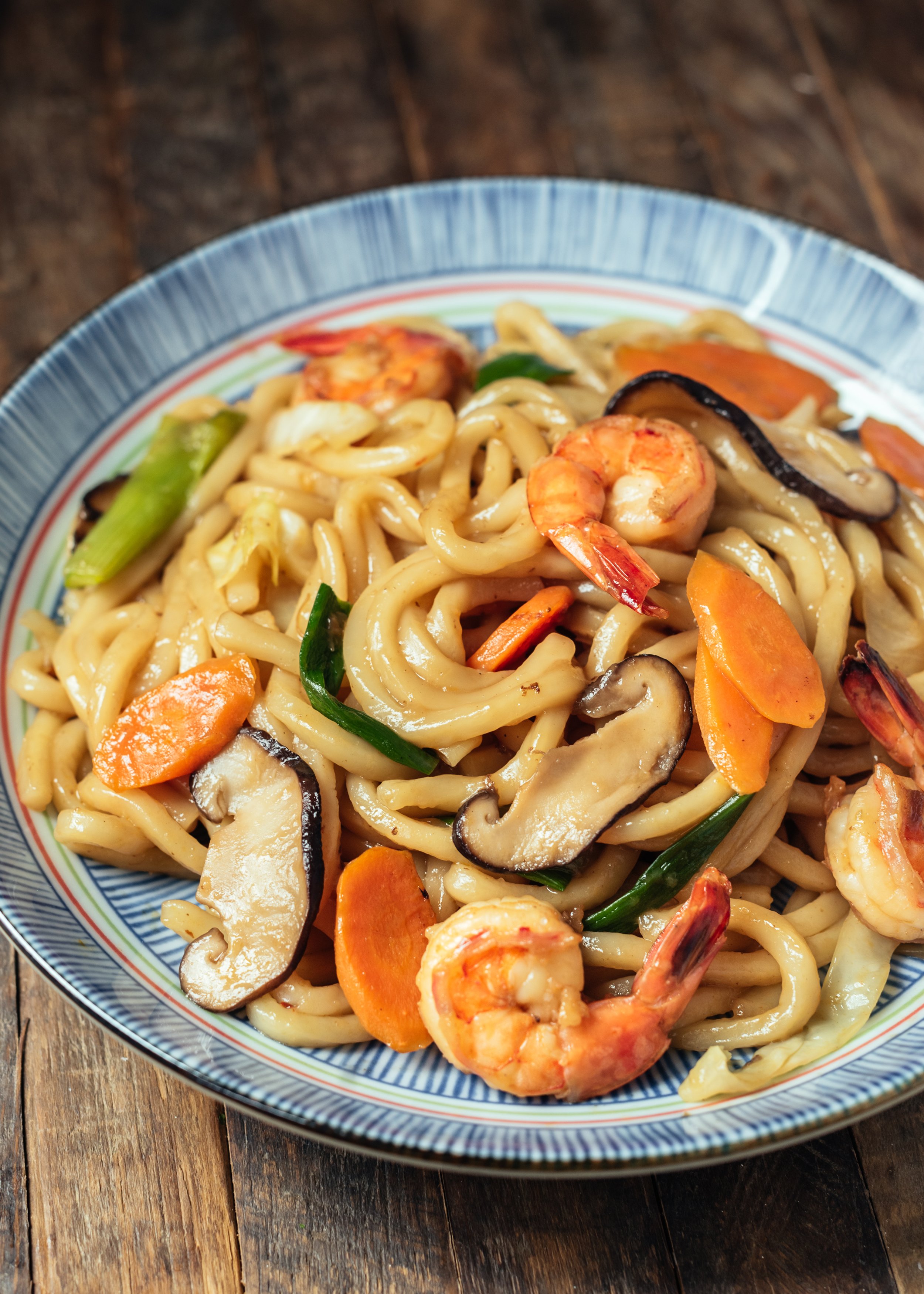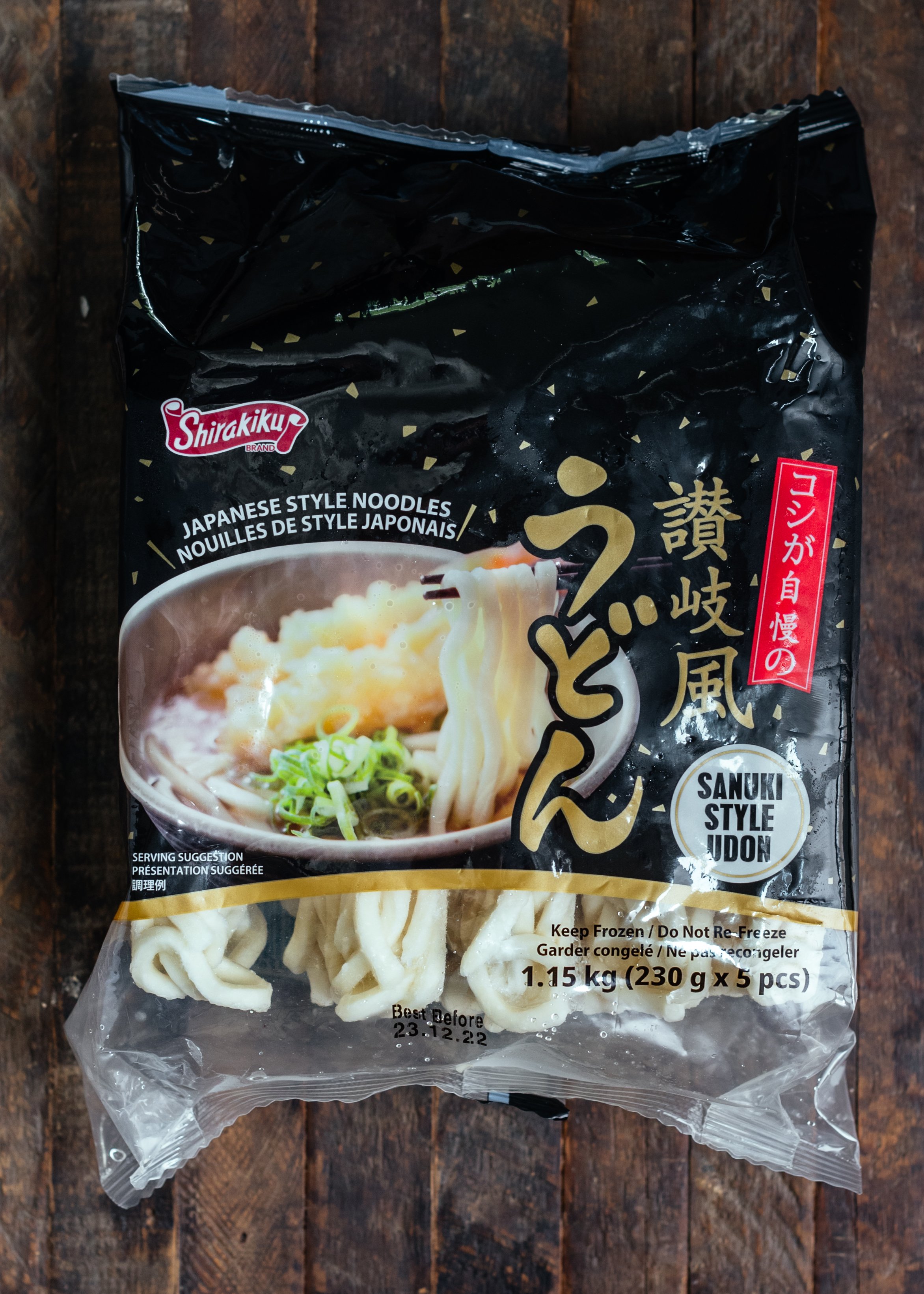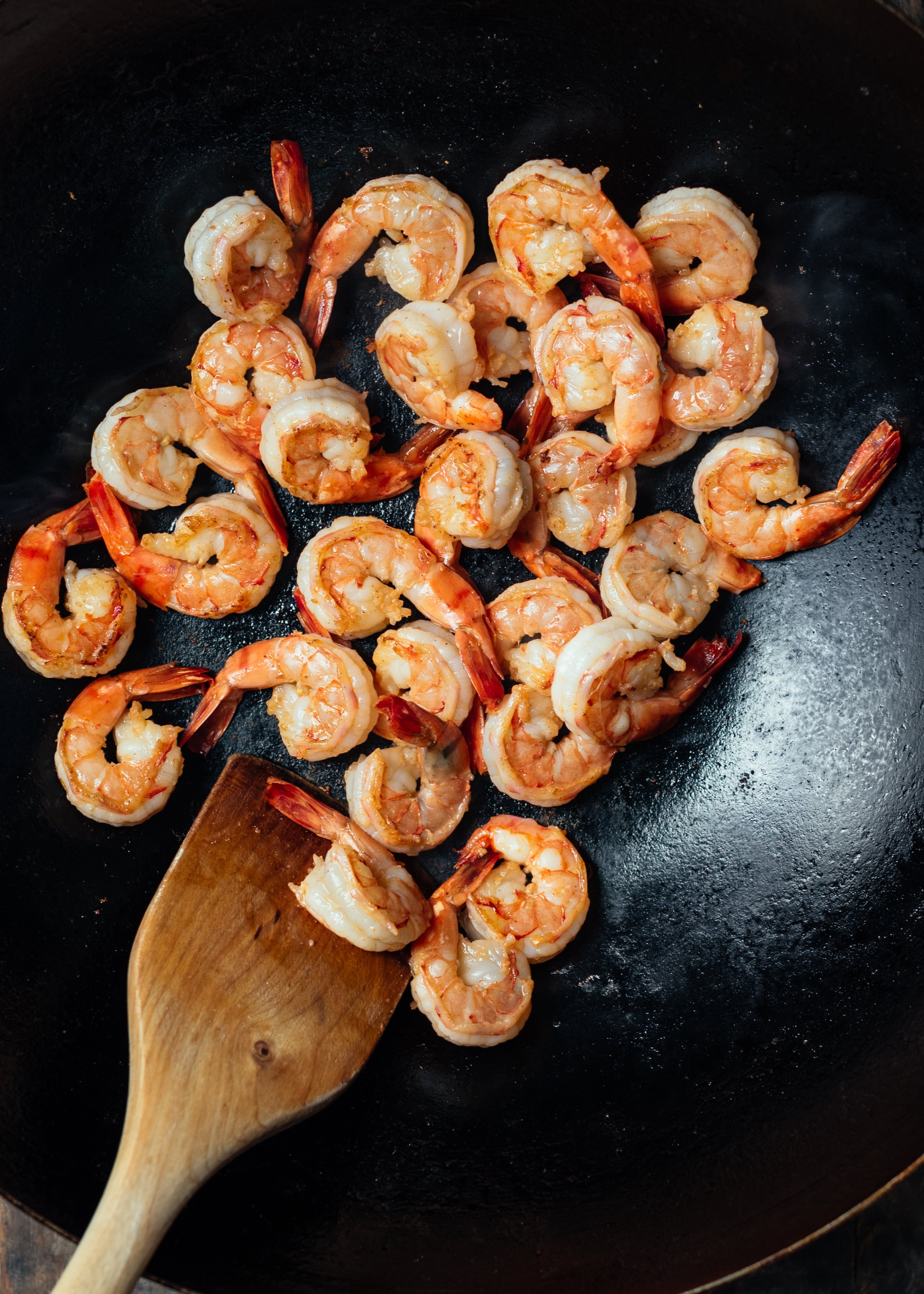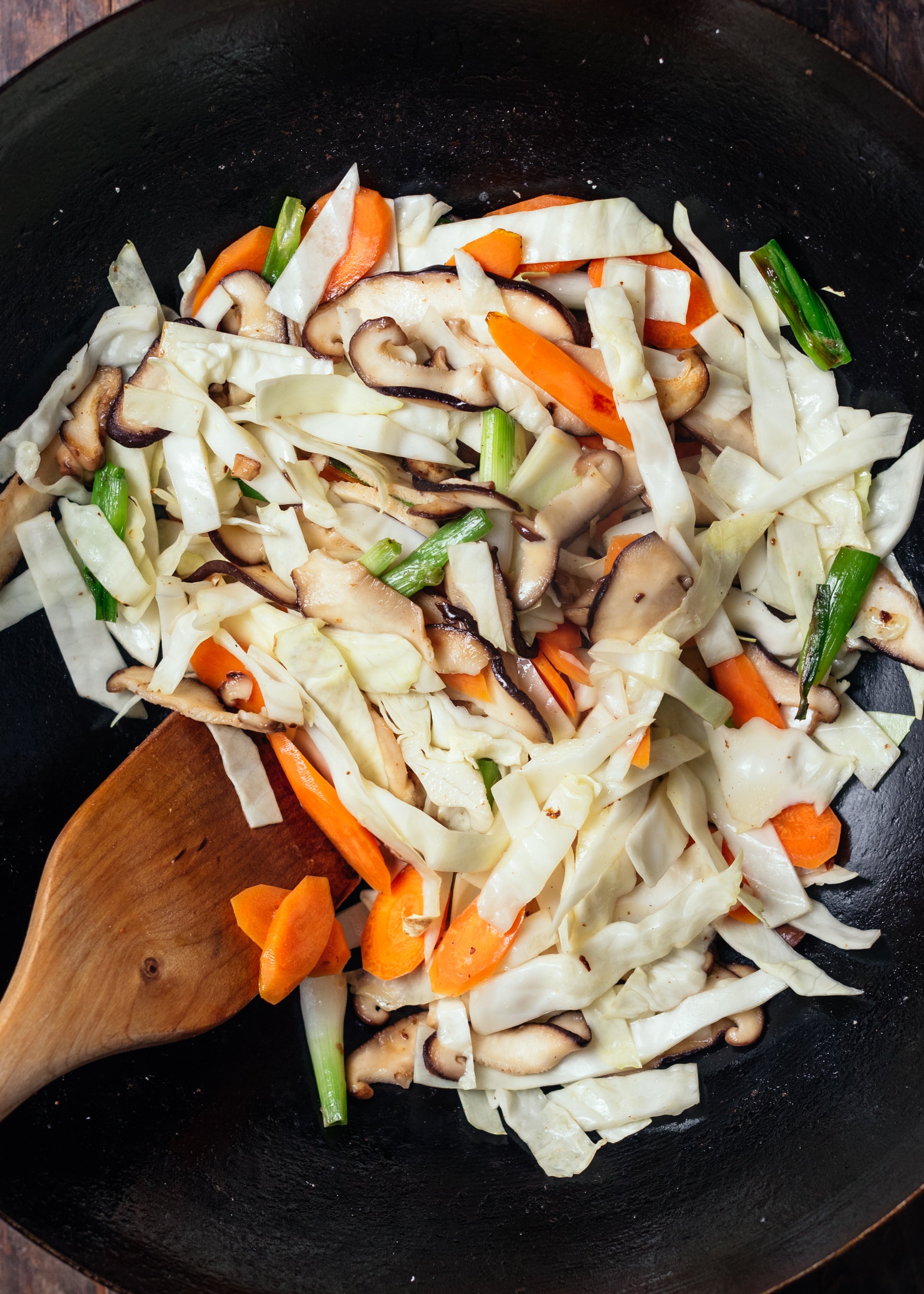Shanghai Stir-Fried Noodles 上海粗炒
This SHANGHAI STIR-FRIED NOODLES recipe features bouncy, thick noodles stir-fried with shrimp, shiitake mushrooms, cabbage, carrots and scallions in a very slurpable, savoury sauce. It’s a 20-minute meal that everyone should have in their weeknight repertoire.
In Cantonese, this dish is called Shanghai Cho Chow Mein (上海粗炒面) which translates to Shanghai Thick Stir-Fried Noodles or shortened colloquially to Shanghai Cho Chow (上海粗炒) without the word “mein” aka “noodle”. It is so well loved that you will likely see it on many tables at restaurants serving Northern Chinese and/or Shanghai cuisines. The great news is, you can easily make it at home in 20-30 minutes, max. The traditional version of SHANGHAI STIR-FRIED NOODLES uses a specific Shanghai style of noodles which are thick, wheat noodles that are sometimes yellow-y in colour. Those are usually only available at Chinese grocery stores sold out of the fridge. A common substitute for Shanghai noodles is Japanese udon which have a similar thickness and chewy mouthfeel. Japanese udon is often sold frozen at most East Asian grocery stores (Chinese, Japanese, Korean) which make them much more widely accessible and easy to stock in the home freezer.
Furthermore, you can easily change up any of the other components to accommodate tastes, diets or simply what you happen to have in the fridge. For example, you can substitute shredded pork or chicken or tofu strips instead of shrimp. Make it plant-based by omitting the shrimp and using vegan oyster sauce. Switch up the leafy veggie with napa cabbage, bok choy or gai lan. Use king oyster mushrooms (hand torn into strips) if that’s what the store had. The possibilities are vast and it will always taste amazing!
Let me know what you think of this SHANGHAI STIR-FRIED NOODLES recipe in comments below and if you make it, tell me how it went. Post and tag me on Instagram so I can see!
Eat well + be well x
You May Also Be Interested in…
SHANGHAI STIR-FRIED NOODLES - RECIPE HEAD NOTES:
1. Frozen shrimp – I will always advocate using shell-on shrimp rather than already shelled frozen shrimp. I’m one who loves a shortcut but, in this case, the texture and flavour is really compromised when you use shrimp that’s been frozen without the shell. And please stay away frozen cooked shrimp, for that matter. My favourite is frozen shell-on shrimp that has already been butterflied and de-veined. THAT is a major time-saver I happily pay extra for.
2. Shaoxing wine – A rice-based cooking wine that is famous from Shaoxing, China. It is a brown liquid that is aromatic, slightly sweet and fragrant. It is used in Chinese cooking the way wine is used in Western cooking, to add a more complex flavour. If you don’t have it, simply omit it from the marinade.
3. Dark soy sauce, or Lo Chou (老抽) – Aged longer versus regular soy sauce and typically mixed with molasses and caramel colour, dark soy sauce is actually less salty with a touch of sweetness and more viscous. It is used to add flavour and colour to dishes such as braised pork belly or these Shanghai Stir-Fried Noodles. When you order this dish at a restaurant, it is almost always darker than my version by way of using more dark soy sauce. You may add more to taste right at the end of the recipe.
4. The traditional version of Shanghai Stir-Fried Noodles uses a specific Shanghai style of noodles which are thick, wheat noodles that are sometimes yellow-y in colour. Those are usually only available at Chinese grocery stores sold out of the fridge. A common substitute for Shanghai noodles is Japanese udon which have a similar thickness and chewy mouthfeel. Japanese udon is often sold frozen at most East Asian grocery stores (Chinese, Japanese, Korean) which make them much more widely accessible and easy to stock in the home freezer.
Full Recipe and Printable Recipe Below:
SHANGHAI STIR-FRIED NOODLES 上海粗炒
Recipe serves 4.
INGREDIENTS
For marinating the shrimp:
¾ lb (340g) raw tiger shrimp, defrosted deveined and deshelled (see recipe note 1 above)
1 tsp Shaoxing wine (note 2)
¼ tsp soy sauce
¼ tsp kosher salt
1/8 tsp white pepper powder
For the sauce:
2 tbsp dark soy sauce (note 3)
2 tbsp oyster sauce
1 tsp soy sauce
½ tsp sugar
¼ tsp salt, more or less to taste
For the Shanghai Stir-Fried Noodles:
1 x 2½ lb (1.15g) package frozen udon noodles or Shanghai thick wheat noodles (note 4)
¼ head of cabbage, cut into 1 cm wide slices (about 4 cups or 250g)
1 large carrot, cut into thin diagonal slices (about 1 cup)
4-6 shiitake mushrooms, thinly sliced (reconstitute if using dehydrated shiitakes)
1 bunch scallions, cut into 2” pieces, white and green parts separated
400ml water or stock
High heat neutral oil for cooking (I use avocado oil)
Salt to taste
METHOD
Place shrimp in a bowl with marinade ingredients. Mix and set aside.
Bring a large pot of water to a boil for cooking frozen the udon noodles.
Mix sauce ingredients together and set aside.
When water is at a boil, cook udon slightly less than package directions. Drain well.
Heat large wok or pan over medium to medium-high heat. Drizzle a tablespoon of oil. Add shrimp. Stir-fry until they just barely turn pink, about a minute (do not overcook). Scoop out and set aside. Add more oil. Add white parts of scallion and shiitake mushrooms. Stir-fry for a minute until mushooms are slightly browned, seasoning with salt near the end so as not to draw out liquid from the mushrooms. Add cabbage and carrots. Stir-fry until cabbage and carrots are just softening but not cooked all the way through.
Add drained udon. Pour in sauce and water (or stock). Toss everything well. Add green parts of scallions and shrimp. Mix again and let it come to a low simmer. Cover and simmer for a couple of minutes or when the noodles have visibly absorbed most of the liquid. Cook uncovered over a higher heat until the sauce is mostly gone and visibly thickened by the starch in the noodles. Taste and adjust seasoning as needed, adding more dark soy sauce if you wish for a darker colour (I don’t add any more as I prefer home cooking to be lighter). Serve right away, preferably with Chinese chili oil!


















